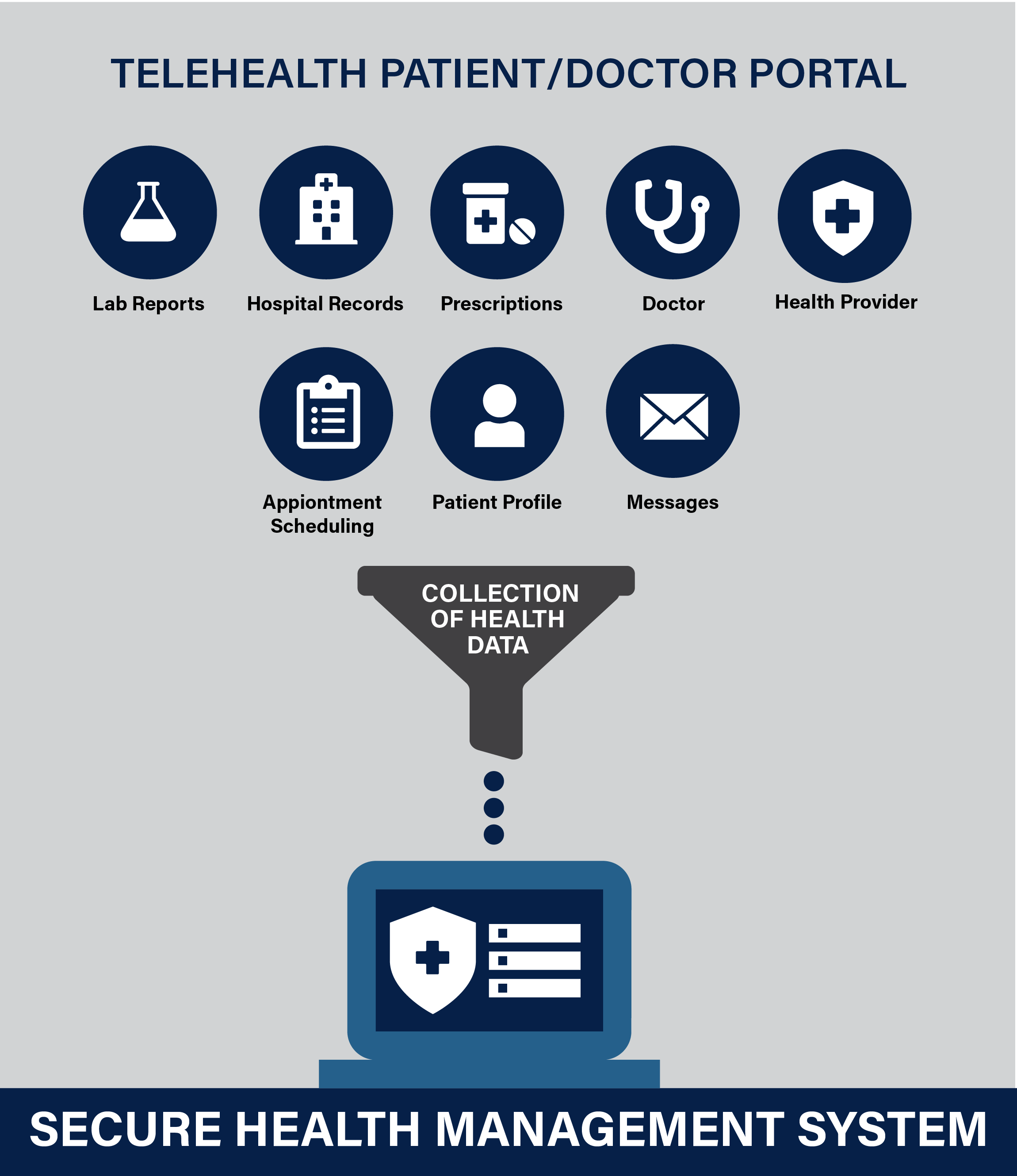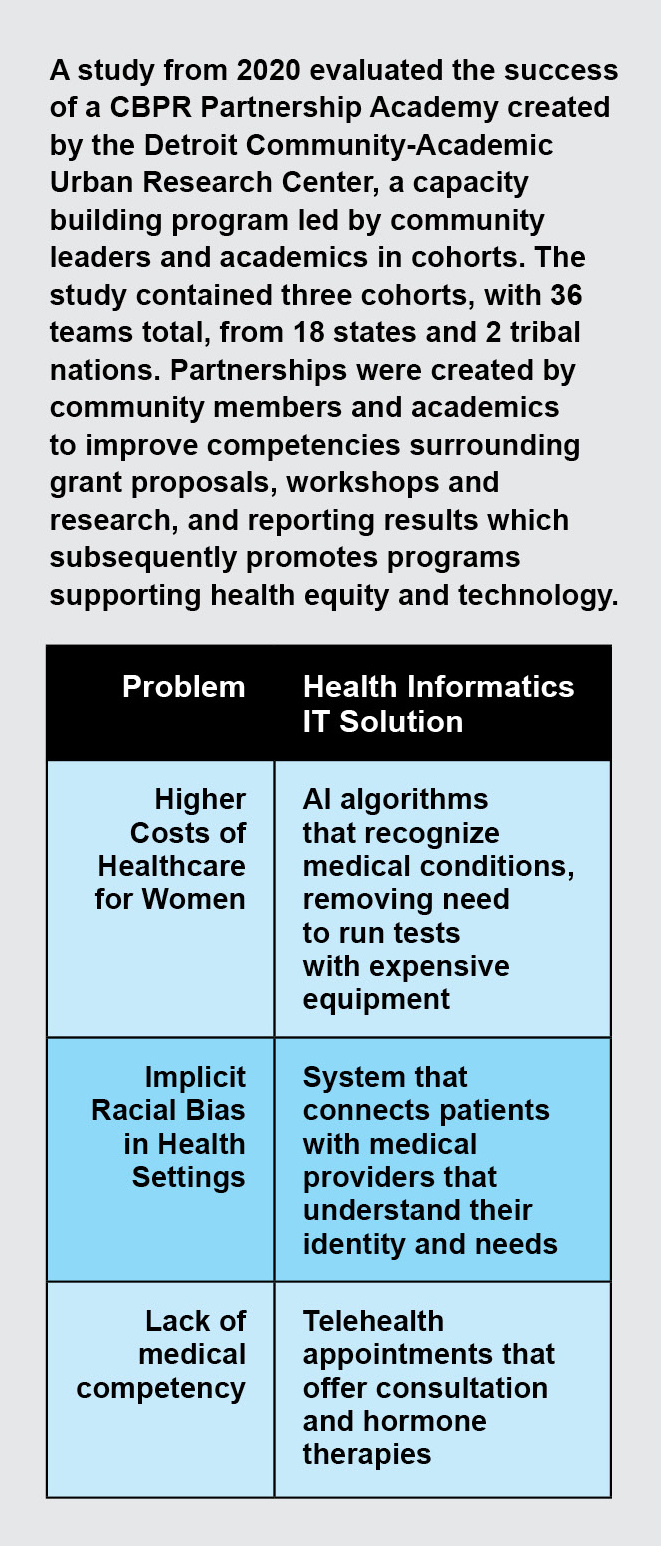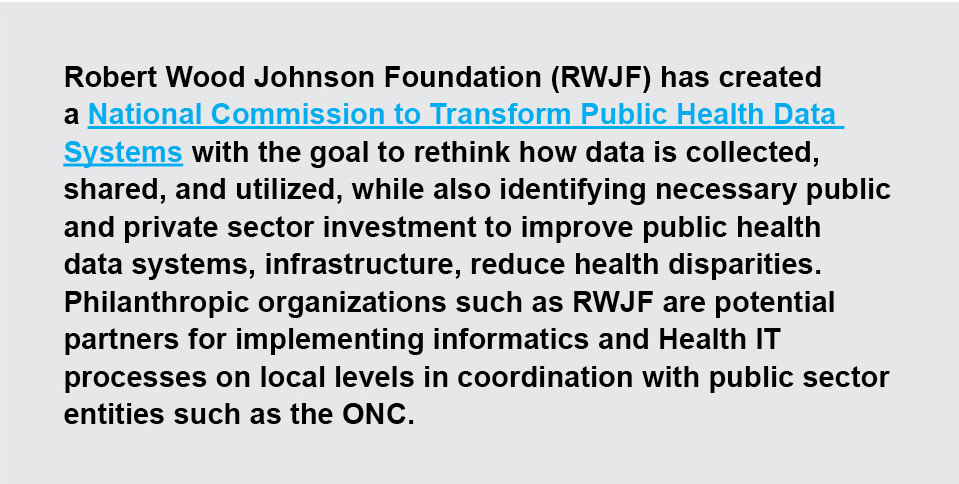<< Back to Media
Public Health Solutions: Health IT and Informatics
December 6, 2021

The U.S. Government now has the structures in place to advance a national public health platform that is equitable for any individual, regardless of gender, race, or socioeconomic status. Innovation in healthcare information technology, or Health IT, over the past twenty years has uncovered the root causes of many public health ills. Health informatics, one component of Health IT, is the collection of data that is processed to improve health outcomes and support public health initiatives. Health IT involves the building and maintaining of the technology structures that collect and manage the data collected by informatics. The two function together to generate the necessary infrastructure and data to enhance public health outcomes.
Public health professionals who focus on community engagement through informatics can strengthen human connections, improve data, and produce tangible results to enhance health care access and delivery. Under the Department of Health and Human Services (HHS), the Office of the National Coordinator for Health Information Technology (ONC) is a “resource to the entire health system to support the adoption of health information technology and the promotion of nationwide, standards-based health information exchange to improve health care.” Through its current HHS resources, the ONC can advance its goals through capacity building and training efforts that connect local efforts to national health infrastructure.
What Health IT Offers
A robust IT system enables real time tracking of all data systems that can monitor procedures and outcomes, cost, and patient care experience. Health IT provides a platform for patients seeking necessary specialists, accessing personal medical records from a mobile device, and coordinating telehealth appointments at home. Informatics can be deployed in communities to understand demographics, health risks, and existing conditions that can then be identified and subsequently treated. Technology ensures data is properly stored, managed, and protected while patients have access to their own records and care. As digital health and informatics tools become a part of the public health and healthcare structure in the United States, they can shrink health disparities. To reduce inequalities, public health professionals must prioritize its use of informatics in their engagement with underrepresented communities to obtain important data on income levels, race, and gender identity. Increased data and visibility can improve healthcare solutions to treat those who historically have not had access to care.
A key study in 2020, Achieving Health Equity Through Health Informatics and Digital Health, provided examples of health programs using technology created with community members to help them improve their health. The authors emphasized:
“These programs are based on where people live, work, play, and pray. We believe that researchers and developers should work together with communities to build modern tools to make everyone healthier.”

Source: CBPR Partnership Academy
The authors also concluded that community-based participatory research (CBPR), which specifically calls for researchers and community members to act as equal partners to achieve outcomes such as education, capacity building, and change management, is vital to ensuring health informatics and digital health tools are utilized properly and inclusively by public health professionals to reduce health inequality. By obtaining support and buy-in from local community members, data based on community-based needs can offer better solutions for those who need health interventions. Informatics tools, such as predictive analytics that evaluate symptoms to determine medical conditions, help establish appropriate care plans whether that is reproductive health, mental health treatment, or gender affirming care, which does not appear in the same ways for every patient. Applying CBPR to public health and academic settings unites quantitative and qualitative research to improve health outcomes, utilize local community data properly, and create sustainable community solutions.
Successful partnerships can lead to clear health intervention implementation to generate data that is collected through informatics to further support local Health IT systems.
How Strategic Partnerships Can Help
The Department of Health and Human Services’ mission is to provide “effective health and human services… by fostering sound, sustained advances in the sciences underlying medicine, public health, and social services.” As the lead department for public health initiatives in the United States, HHS will determine the future Health IT and informatics strategies in public health. Health Information Technology is an opportunity for HSS to provide equitable treatment, access, and outcomes for everyone. The department’s public health officials understand the current structure and constraints its constituents face, and the solutions that technological advancements can provide, especially around strategic partnerships that offer HIT solutions to underserved communities. Just recently, HHS partnered with March of Dimes to minimize disparities in maternal health outcomes between Black and White mothers through data driven interventions. These existing partnerships with universities, NGOs, and research organizations can serve as the blueprint for providing resources to local communities.

Source: Robert Wood Johnson Foundation
Within HHS, the Office of the National Coordinator for Health Information Technology (ONC) leads national Health IT efforts and promotes national standards on data sharing, technological infrastructure, and coordination of Health IT capabilities. The HHS can further utilize community-based partnerships that include grant funding for local non-profits and academic institutions. In addition, ensuring Health IT approaches such as electronic health record systems — which allow medical staff to better engage with patients’ existing conditions, create better treatments, and improve patient education — can be implemented on the national level for Medicare, Medicaid, and Veterans Affairs government led health systems.
How WBD Can Help
The risk management, public health, and IT experts at Washington Business Dynamics (WBD) understand that Health IT is more than simply telehealth appointments and electronic health records. Rather, the strategic use of HIT is an opportunity to unite communities towards a common goal: living longer and healthier lives in a way that is affordable and attainable for everyone.
Because of our work in risk management and IT for the U.S. Departments of Defense and Homeland Security, and our expertise connecting the private and public sector with our client the U.S. Agency for International Development, WBD is uniquely positioned to support Health IT infrastructure through private sector engagement and informational technology innovation. We work as partners with our government clients to ensure that risks are assessed, data is collected and analyzed through advanced tools, and partnerships between government, communities, and the private sector are effective, strategic, and successful in improving our clients’ missions.
Author: Mia Caglieris, Senior Associate at WBD, is a strategy and an international development professional engaged with the firm’s Private Sector Engagement Support award with the United States Agency for International Development.
